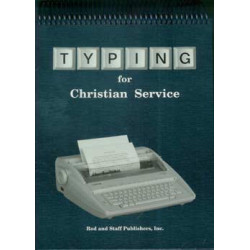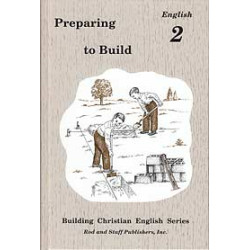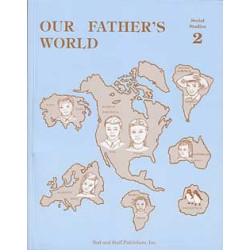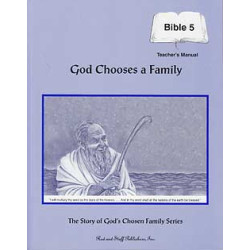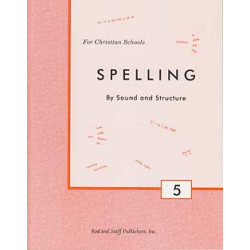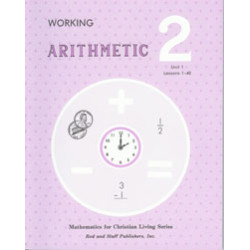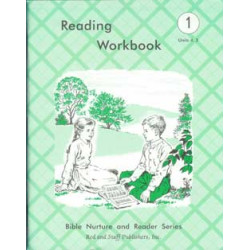Subjects
Subcategories
-
Art with a Purpose...
Art With A Purpose
by Share-A-Care Publications
Simple step-by-step art lessons for children in grades 1-8. Each Artpac has ready-to-use pupil art sheets, bound in tablet form. Directions, examples, and needed materials are listed for the teacher.
Each student will need a separate student packet. The teacher should also have a packet to do as samples beforehand. Extra packets will allow the teacher to demonstrate doing the project in class and provide spares for the times someone needs to start over.
The Artpac number is the recommended grade level, but grades may be effectively combined using a packet near the actual grade level. If an upper-grade student has not had art lessons previously, you should probably start at their skill level, and advance as their ability increases. You will appreciate the simplicity and ease of art in this well-planned course.
Concepts covered in the various Artpacs:
- Artpac 1 Simple coloring skills, color-by-number, cutting and pasting.
- Artpac 2 Simple coloring skills, cutting, pasting, simple perspective drawing.
- Artpac 3 Coloring, shading with crayons, simple grid drawing and painting.
- Artpac 4 Coloring, shading with crayons, drawing stick figures, simple grid drawing, and perspective drawing.
- Artpac 5 Shading with colored pencils, drawing faces, painting and paint mixing, lettering, and grid work.
- Artpac 6 Shading with colored pencils, drawing faces, lettering, grid work, freehand and perspective drawing.
- Artpac 7 Advanced shading with soft lead colored pencils, grid drawing, calligraphy, paint mixing and painting, and sketching.
- Artpac 8 Shading with pen and ink.
-
Bible
This series begins in Grade 5. In Grades 1-4, Bible Study is an integral part of the Bible Nurture and Reader Series.
-
English
-
Maths
"Rod and Staff's math program is black-and-white, straightforward, no-nonsense, traditional mathematics with an emphasis on drill and memorization as well as practical application through word problems. Previously taught concepts are continuously reviewed." —Cathy Duffy
-
Penmenship (Printing...
This is a stand-alone handwriting course designed for grades 1 - 4. (In grade 1 the workbooks are also included in the phonics and reading course.) This course introduces the letters according to how the strokes are formed. Grade 2 reviews straight "manuscript" lettering and introduces cursive. Upper-grade students who need penmanship practice may choose to review the grade 4 course.
The letter forms are quite similar to those used by Pentime penmanship (grades 1 - 8), so students should be able to switch between curriculums without much difficulty.
-
Phonics
Rod and Staff's Phonics program is an integral part of the first and second-grade Bible Nurture and Reader Series. However, it can be used independently as well.
-
Reading
-
Science
God's World Science Series
Many science books have been written about the wonders of God's world, but very few give God the credit for His creation. Teachers who were educated according to the evolutionary concepts of origin or other secular ideas will need to be especially diligent to make their science classes God- and Bible-centered. These textbooks should be a help in this respect.
This series covers the major branches of science. The suggested science activities and experiments are not essential to completing the course, but they are designed to be economical and easy to apply.
-
Social Studies
The proper study of history begins with a firm belief in the authoritative Word of God. Social culture, history, and geography can be evaluated correctly only when the design and purpose of God is considered. Rod and Staff's texts seek to honor God and view man and his actions in Biblical perspective.
In keeping with a Biblical perspective, these textbooks center on the place of God's people in history, instead of idealizing military heroes and super-power nations. We want to guide our students to a better understanding of God's unfolding plan for mankind rather than following man's pursuits, achievements, and culture from a humanistic perspective.
-
Spelling
Spelling by sound is the simple phonetic skill of hearing sounds and writing the corresponding letters. Spelling by structure applies regular patterns of word building, such as doubling the consonant to add -ing.
Though the English language has many irregularities and phonetic exceptions, a good grasp of phonics aids correct spelling. The majority of consonant sounds and some vowel sounds are consistently indicated by the same letter. Other sounds have consistent spelling patterns according to position in a word or syllable.
About one-half of the words in our vocabulary are phonetic. Most of the remaining half employ spelling patterns (such as oa for long o) and word-building patterns (such as dropping e to add a suffix).
In the younger grades, Spelling by Sound and Structure uses more phonetic emphasis. Advancing grade levels deal more with word structure. The lesson sections deal with different types of study: phonetics, meanings, affixes, and dictionary skills.
Grades 7 and 8 introduce some Latin and Greek roots and their meanings, with exercises to teach students to recognize, understand, and spell numerous words in our language. For example, knowing that the Latin root bene means "well" sheds light on the words benefit, benevolent, benediction, and benign. In these grades, phonetics and dictionary skills continue in a review capacity. Each lesson also teaches something about the development of the English language.
Bible words, characters, and stories appear in the exercises and illustrations.
The three lower grades (2 - 5) provide a softcover workbook format for the student, while the three upper grades (6 - 8) switch to a hardcover textbook, requiring the student to write the answers on separate notepaper.
In grade 3, the word lists are shown in cursive as well as straight letters, while grades 4 and above use only cursive. (If a student is also using the stand-alone penmanship course, they will learn cursive in grades 2 and 3.)
Compared to Practical Spelling, this series offers a more Biblical emphasis, with frequent references to Bible stories and Christian conduct. Also, the teacher's manuals provide test sentences for each spelling word, and in the lower grades some additional guidance for teaching the lesson. In the upper grades, the lessons become more extensive, offering insights on the historical development of our language, as noted above.
-
Music
Christian Music Series - Teaching A Cappella, Shaped-Note Singing
The Rod and Staff Music Program is primarily designed to promote a cappella singing. A knowledge of the rudiments of music definately aids singing correctly. Learning shaped notes, which has helped many to sing tones accurately at an early age, enables students to learn to sing new songs without musical accompaniment. Since musical instruments are not used by most conservative Mennonites, the ability to sing four part music well often rests on the ability to sing shaped notes.
-
Typing
This typing course is designed to provide Christian schools with an alternative to selections usually found in typing courses. Lesson selections are a variety of Scripture passages, songs, poetry, articles, and upbuilding stories. Through the completion of this course, students will type all the Book of Philippians.
This course is designed for the ninth- or tenth-grade level. It contains sixty lessons, with every sixth lesson serving as a test. It is intended to provide two lessons per week for a one-year course, although it can be used over the course of two years with one lesson per week. It also contains extra-practice selections for the student whose typing skills need reinforcement or for the student who simply needs more material. Included in the extra practice are six sets of challenge exercises.
This course emphasizes accuracy before speed and teaches correct posture, touch-typing, and proficiency through practice. It is designed to provide keyboard mastery, but it does not teach secretarial skills.
Although this course is planned for the use of typewriters, it can also be used with computers. Learning to type on a typewriter is encouraged because mistakes cannot easily be corrected, thus encouraging accuracy and more-accurate grading. A student who learns to type on a typewriter finds it a simple matter to shift to a computer, whereas a student who learns to type on a computer generally feels handicapped when required to use a typewriter. The teacher's manual contains notes for the teacher whose classroom is provided with computers.
The pupil's book is so designed that the student can move through the course mostly on his own, though teacher involvement is strongly encouraged. Spiral-bound with hard covers, this book stands nicely on its own.
The softcover teacher's manual contains pointers for each lesson—objectives, teaching notes, and grading forms—as well as an outline of the course.


